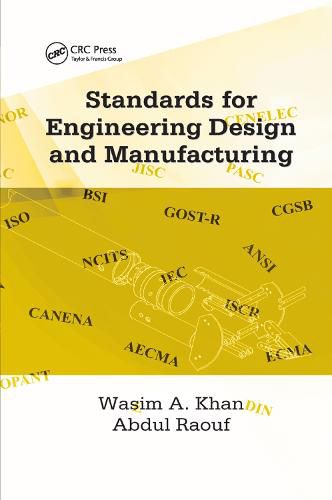Readings Newsletter
Become a Readings Member to make your shopping experience even easier.
Sign in or sign up for free!
You’re not far away from qualifying for FREE standard shipping within Australia
You’ve qualified for FREE standard shipping within Australia
The cart is loading…






Most books on standardization describe the impact of ISO and related organizations on many industries. While this is great for managing an organization, it leaves engineers asking questions such as what are the effects of standards on my designs? and how can I use standardization to benefit my work? Standards for Engineering Design and Manufacturing provides hands-on knowledge for incorporating standards into the entire process from design bench to factory floor.
The book’s five self-contained sections consider the scope of design and manufacturing, standards for the design of discrete products, standards for the manufacture of discrete products, standards for the use of discrete products, as well as support standards. The authors survey in detail the major standards-setting organizations and outline the procedure for developing standards. They consider standards from the perspective of product, equipment, and end-user, using this as a platform to explain the economic benefits of standardization. Case studies in every section illustrate the concepts and offer practical insight for using standards in CAD/CAM, selection of components, process planning, human/machine interaction, and computer interfacing.
With its modular approach and practical wisdom based on the authors’ years of broad experience, Standards for Engineering Design and Manufacturing supplies the tools to incorporate standards into every stage of design and manufacturing.
For a summary of chapters, as well as illustrations and tools from the book, visit
$9.00 standard shipping within Australia
FREE standard shipping within Australia for orders over $100.00
Express & International shipping calculated at checkout
Most books on standardization describe the impact of ISO and related organizations on many industries. While this is great for managing an organization, it leaves engineers asking questions such as what are the effects of standards on my designs? and how can I use standardization to benefit my work? Standards for Engineering Design and Manufacturing provides hands-on knowledge for incorporating standards into the entire process from design bench to factory floor.
The book’s five self-contained sections consider the scope of design and manufacturing, standards for the design of discrete products, standards for the manufacture of discrete products, standards for the use of discrete products, as well as support standards. The authors survey in detail the major standards-setting organizations and outline the procedure for developing standards. They consider standards from the perspective of product, equipment, and end-user, using this as a platform to explain the economic benefits of standardization. Case studies in every section illustrate the concepts and offer practical insight for using standards in CAD/CAM, selection of components, process planning, human/machine interaction, and computer interfacing.
With its modular approach and practical wisdom based on the authors’ years of broad experience, Standards for Engineering Design and Manufacturing supplies the tools to incorporate standards into every stage of design and manufacturing.
For a summary of chapters, as well as illustrations and tools from the book, visit